Chambéry Tarot
French Flower Tarot
- Introduction
- Players and Cards
- Deal and Discard
- Bidding and Calling
- Play of the Cards
- Scoring
- Four-Player Game
- Three-Player Game
- Game with a shortened pack (le tarot simplifié)
- Comments
- Botanical Notes
- Foldable Rule Sheet
Introduction
In 1902, card makers Fossorier, Amar & Cie (Paris) issued a charming Art Nouveau Tarot pack, with pictures of flowers on the trumps drawn by E. Helle. It was called the Tarot français des fleurs, “French Flower Tarot”. The cards have been reprinted several times, most recently under the Dussere brand.
Accompanying the cards are rules by the Club des Taroteurs in the Grand Café Emile Coudurier in Chambéry, the capital of French Savoy. We give here an English version of the rules for those who have a flower tarot pack. The game may also be played with any normal French-suited Tarot pack of 78 cards (as they probably normally did then as well). The rules are comparatively simple and thus a good introduction into the family of classic Tarot games.
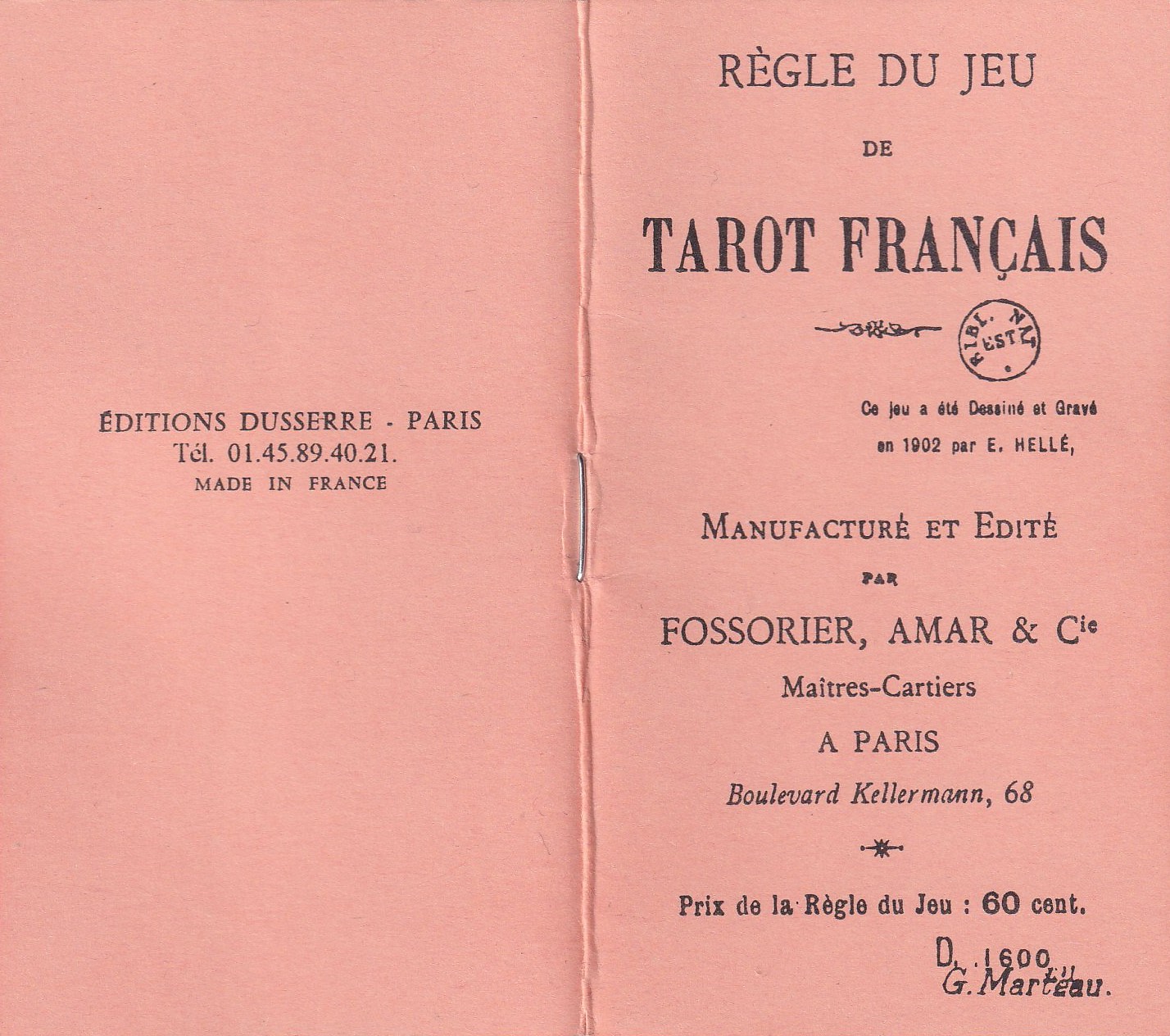
Because Savoy (like Nice) belonged to the Kingdom of Sardinia until 1860, the rules are more akin to those of Piedmont and Nice than to those of modern French Tarot. The rules for the four- and five-handed games are of the same type as those for Tubingen Tarock (Tarock Quadrille); the three-player game is like Grosstarock but without declarations and the Ultimo feature.
Players and Cards
It is a typical Tarot game for three to five players. When four or five play, partnerships are formed; in the three-hand game each plays for themselves. The objective is to win the majority of card points. The five player variant that was clearly preferred in the Grand Café Coudurier will be described first.
A French-suited Tarot pack of 78 cards is used (there is also a version tarot simplifié using a pack shortened to 62 cards - see below). It is also useful for each player to have a supply of chips with a total value of 50 points each if you do not want to keep a written score after each hand.
The suit cards bear the usual images and French corner indices, their rank from high to low is King (index R, French Roi), Queen (D, Dame), Cavalier (C, Chevalier) and Jacks (V, Valet). Then follow the numeral cards 1, 10, 9, 8, 7, 6, 5, 4, 3, 2. The Ace (1) ranks immediately below the Jack in every suit.
The trump (tarots) rank from high to low as follows: 21, 20, ..., 2, 1 (a number in bold is a tarot). The Pagat (1) is called baga in the local dialect.
The Fou (fool) plays a special role.
The values of the cards are as follows.
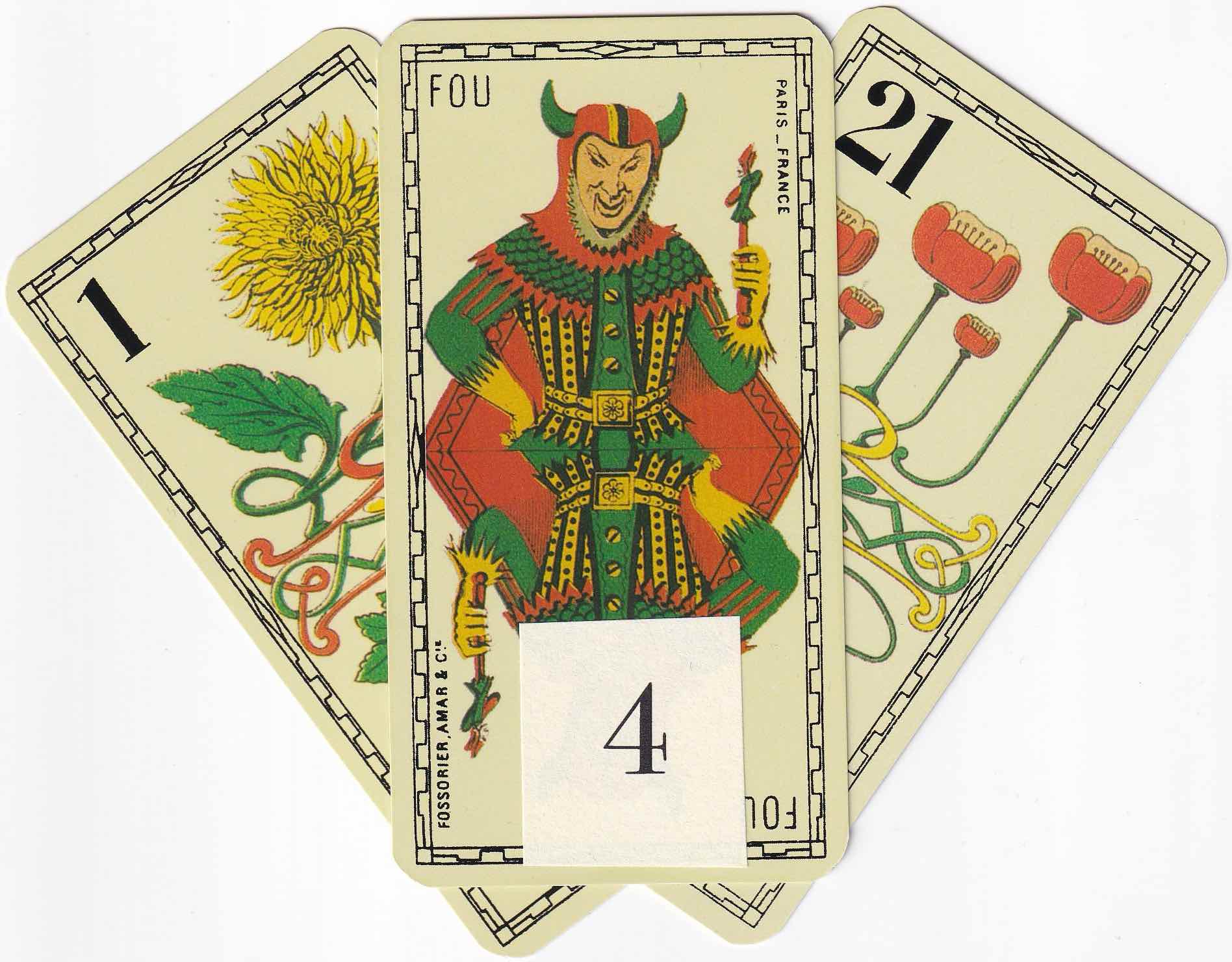
Fou, 21 and 1 – 4 points each
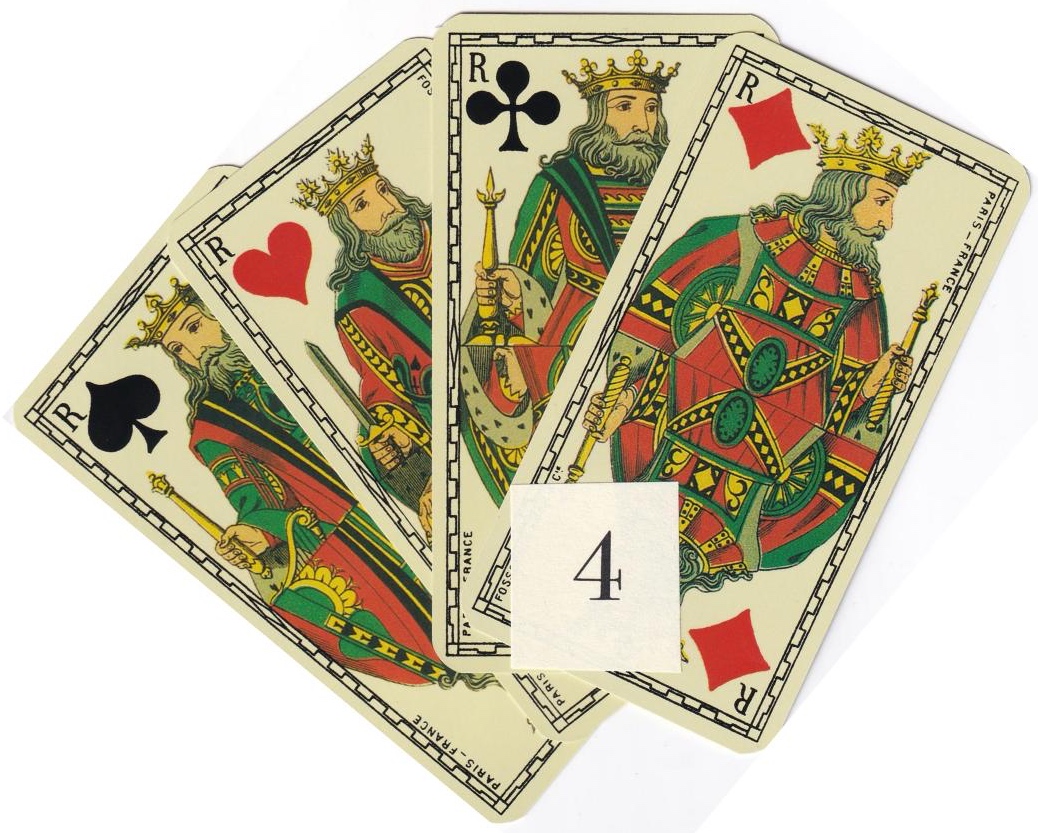
Kings – 4 points each

Queens – 3 points each
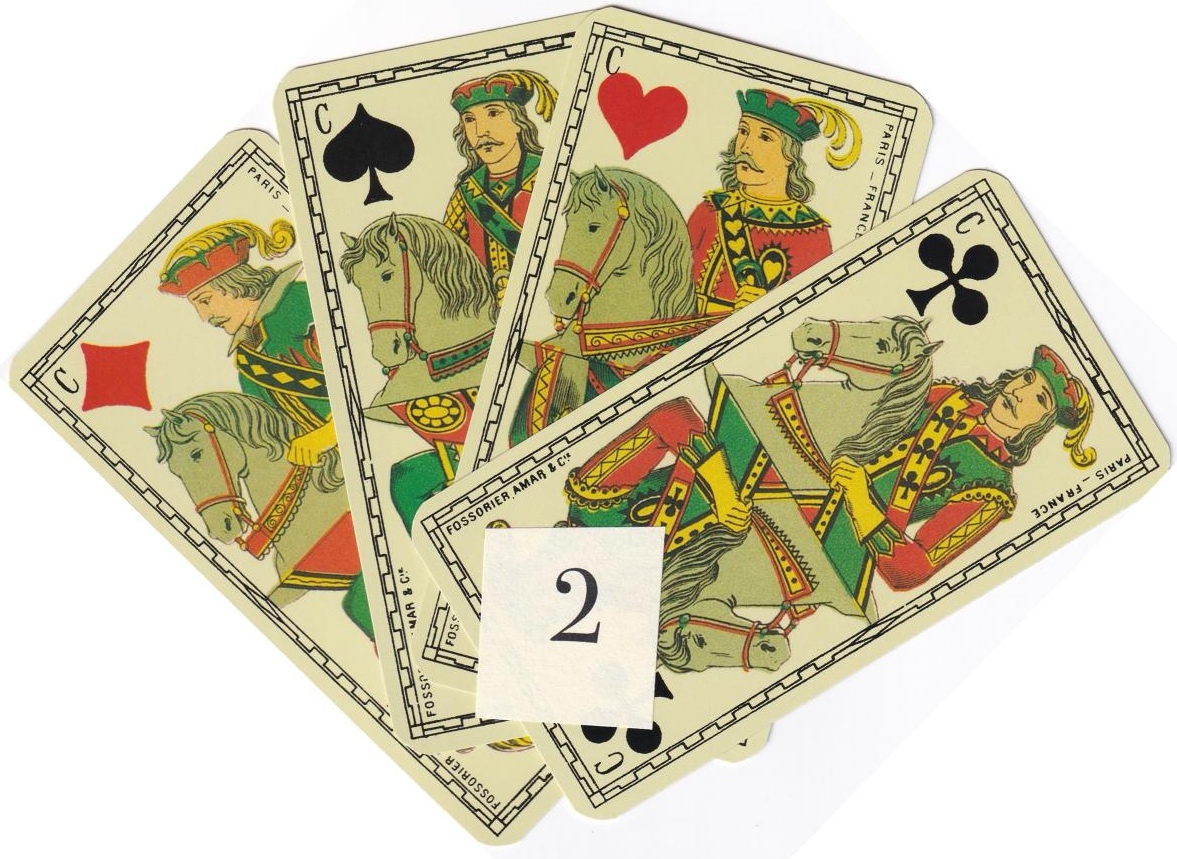
Cavaliers – 2 points each

Jacks – 1 point each
Other cards have zero point value. In addition each trick is worth 1 extra card point and the discard is also worth 1 point (in addition to the value of any counting cards it contains.
The total value of the counting cards is 52 card points, and together with the tricks and discard that gives a total of 68 card points in the five-player game.
Deal and Discard
Deal and play are anticlockwise.
The first dealer is chosen by any agreed means and the deal rotates to the right after each hand.
If there are six players at the table, the player to the left of the dealer (i.e. the previous dealer) receives no cards and sits out of the hand.
The dealer shuffles, the player to dealer's left cuts, and the dealer distributes the cards in packets of 5 going three times around the table so that each player other than the dealer has 15 cards. The dealer takes the last 3 cards, for a total of 18 cards in the dealer's hand.
The players view their own cards. The dealer discards, that is lays away 3 cards face down on the table, leaving 15 cards in hand. These discarded cards count for the dealer's team.
In no case may Kings, the 21 or Fou be discarded. Tarots other than the 21 may be discarded only if, as a result, the dealer is left with no tarots in hand; the Fou does not count as a tarot for this purpose. If the dealer discards the 1 in this way, which is allowed, the dealer must announce: «Baga à l’écart» (“Pagat discarded”).
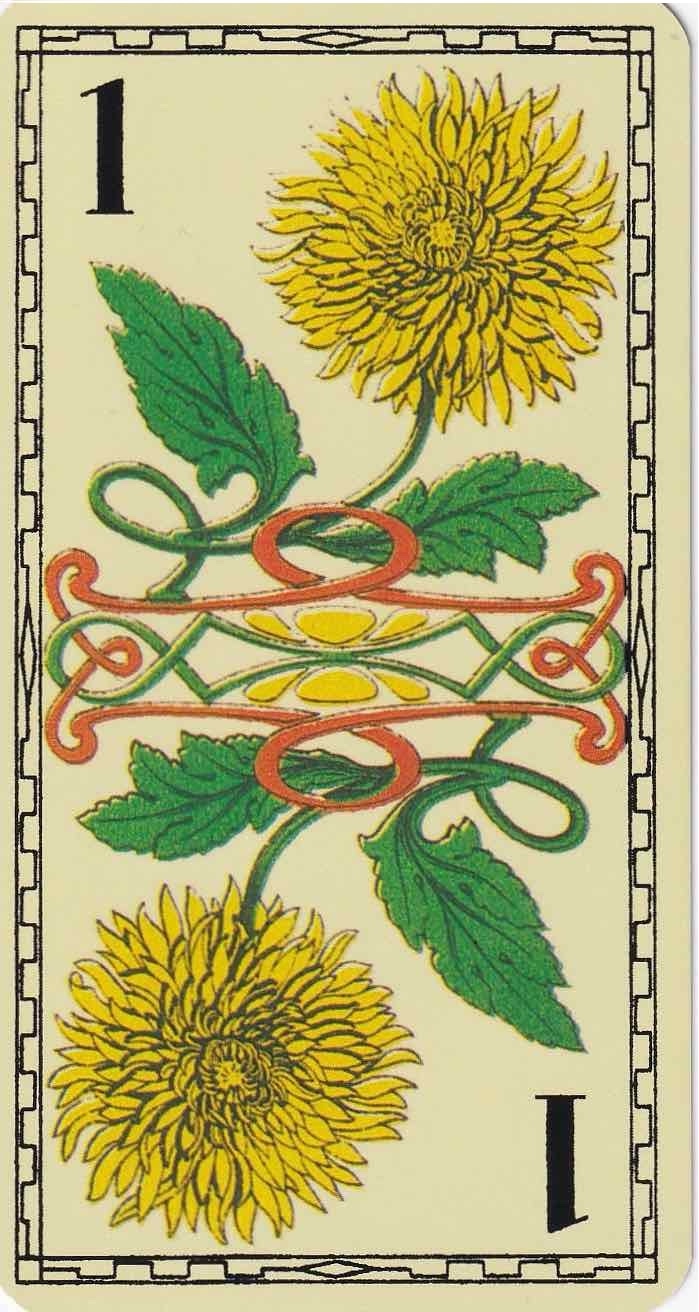
The rules do not state what happens in the rare case that the dealer has so many tarots and Kings that some of them must be discarded to reduce the dealer's hand to 15 cards. A rule for this case that is often found in other tarot games is that the player may then discard tarots with no point value (i.e. not the 1 or 21) and announces how many tarots were discarded.
Bidding
There is a round of bidding, beginning with first hand (the player to the right of the dealer), to find out whether any player wishes to play a 'Solo', that is to play alone against the four opponents as a team. Each player in turn has just one chance to speak, and a player who does not want to play a Solo passes.
A Solo player may demand up to two cards from the other players, naming the number as part of the bid. Therefore there are three levels of Solo bid:
- «Je marche seul à deux cartes» (I’m playing alone with 2 cards); 2-Card Solo
- «Je marche seul à une carte» (I’m playing alone with 1 card); 1-Card Solo
- «Je marche à point» (I’m playing alone with the cards I was dealt); Hand Solo.
If a player bids a Solo and a later player also wants to play Solo, this later player must bid a Solo with fewer cards. This supersedes the earlier bid.
If there is a Solo player, then at the end of the bidding round this player specifies the cards (if any) that they want. The only restriction is that a player cannot ask for the Fou. The holders of the one or two demanded cards must hand them to the soloist. For each card received the soloist gives an unwanted card in exchange (probably face down). The rules do not specify what happens if the card asked for has been discarded by the dealer. In practice this situation will never arise since the Soloist will ask for the 21 or other high trumps or Kings, which cannot have been discarded.
If no one wants to play a Solo, the dealer must choose a partner by calling a King, or a Queen if dealer holds all four Kings. Whoever holds the called card immediately makes this known. The dealer and the called player form a partnership against the other three players.
Play of the Cards
The player to dealer's right begins the play by leading any card face up. The other players, in turn, each add a card face up to the trick.
If a suit card is led, the other players must follow suit if they can. Anyone who cannot follow suit must play a tarot (trump). If a tarot is led the others must play tarots. There is no obligation to overtake or overtrump. A player who cannot follow suit and has no tarots can play any card.
The trick is won by the person who played the highest tarot, or the highest card of the led suit if no tarot was played. Whoever wins the trick leads to the next.

Fou. Instead of following suit or trumping, the owner of the Fou can show it on any one occasion and then add it to their own team's tricks. The trick then consists of the other four cards. The Fou itself can never win a trick itself.
The rules do not state whether the Fou can be shown as the first card of a trick. A typical rule would be that it is allowed and in this case the second card played determines which suit must be followed or trumped.
Scoring
In addition to the total value 52 of the counting cards, there are 15 tricks and the discard which score 1 extra point each. Therefore, there is a total of 68 points for cards. If the score is tied at 34 – 34, the game is a draw.
Otherwise, the team with less than 34 card points pays the difference to the winners, which may be multiplied as follows.
- If the losers have less than half the points needed to tie (less than 17), the payment is doubled.
- If the soloist played a 1-Card Solo the payment is doubled.
- If the soloist played a Hand Solo the payment is multiplied by four.
The maximum multiplier is therefore eight-fold for a Hand Solo in which the losing team has less than 17 card points.
If the dealer called a partner and the team of three loses, each loser pays the difference multiplied by the game factor and the two winners share the amount equally. If the amount to be shared is an odd number, the dealer gets the extra point. If the dealer’s team loses, both have to pay the three opponents, so each has to pay one and a half times the difference multiplied by the game factor, and the dealer again pays the extra point if necessary.
In a Solo, the soloist pays or receives four times the difference multiplied by the game factor, and the opponents each pay or receive singly.
After one round, when each player has dealt once (5 deals), the rubber ends.
Four Player Game
There are two ways to play:
- As with five players with a round in which players can bid Solo and the dealer calling a King for partner if all pass.
- With fixed partnerships and no Solo contract, the partners sitting opposite one another (croisé).
Each player receives 19 cards, presumably dealt: 5, 5, 5, 4. The dealer deals 6 cards last and discards two, which count as an extra point for the discards.
The total value of the cards is 52 plus 19 for tricks plus 1 for the discard pile, 72 altogether. A tie occurs at 36 all.
The game value is doubled if one side has fewer than 18 card points. In the variable partnership format it is also doubled for a 1-card Solo and quadrupled for a Hand Solo.
Three Player Game
Each player receives 5 batches of 5 cards, a total of 25. The three extra cards are added to the dealer's final batch giving the dealer 28 cards from which 3 must be discarded. These discarded cards as usual score 1 card point for discards, in addition to their own card point value.
There are no partnerships and no Solo contract.
There are 78 card points in all (52 for cards + 25 for tricks + 1 for the discard). Players with fewer than 26 points pay the difference, doubled if they have fewer than 13 points. Players with more than 26 share the amounts paid in proportion to their difference in points.
Example. Amélie has 37 card points, Béatrice 29, Cécile 12. The differences from 26 are: Amélie +11, Béatrice +3, Cécile −14. Since Cécile has fewer than 13, she pays the difference twice: −28. Amélie receives +22 and Béatrice +6.
Shortened Pack (le tarot simplifié)
The lowest cards of each suit, the 2, 3, 4 and 5, are removed from the deck leaving 62 cards. The game is played by three or four players.
Four players (either in fixed partnerships or with Solo /Call). Each player receives 15 cards in three packets of 5. The dealer has 2 extra cards and discards two. There are 68 card points (52 + 15 + 1), a tie is 34 all, and the game value is doubled if a player/team has less than 17.
Three players. Each receives 20 cards in four packets of 5. The dealer has 2 extra cards and lays 2 away. The cards discarded do not count as an extra point in this version. There are 72 card points (52 + 20). Anyone who has less than 24 card points has lost, double if they have less than 12.
Comments
Scoring. The rules above interpret the information in the rulebook according to the usual procedure in practically all Tarot games in which the result is a zero-sum. The rulebook itself only describes the game for five players:
"Le nombre total des points étant de 68, chacun des joueurs du camp qui n’a pas atteint 34 points paie aux adversaires, qui se les partagent, autant de jetons que ceux-ci ont fait de points en plus de 34."

Michael Dummett interprets the payment system differently (in The Game of Tarot, 1980, and the same interpretation is repeated in: Dummett/McLeod, History of Games Played with the Tarot Pack, 2004, games 8.28 to 8.34). According to Dummett, a loser always pays the simple difference from the halfway value multiplied by the game factor. This would mean that, for example, a soloist would be paid four times as much if successful as they would pay if they lost by the same margin. In case of a loss by the soloist the opponents would somehow have to share the payment between the four of them. Dummett gives this explicitly as an example. Such a rule would, however, be very unusual among tarot games in weighting the payments so much in favour of the soloist.
Unfortunately in historical rulebooks the scoring of card games game scoring is often not explained with the level of detail and clarity one would expect of a modern description.
In the rule book, the method of payment for three players with a shortened pack is given under the place where the game with the full pack is described. This error has already been spotted and corrected by Michael Dummett.
The question of who gets the extra point when payments cannot be shared exactly is not addressed in the rulebook, as it probably did not arise at the time. Even with a stake of one centime per point, it was possible to share the point, as half-centime coins existed.
The rule book states that if a player makes an accidental mistake that cannot be corrected, the game is annulled.
Clarification. In the rulebook, page 7ff. says about any ambiguities: "[…] we only give a broad outline of the game and leave out the small details that players learn in practice." They promise that: "If necessary, we will fill in any gaps in a new edition." In any case, there is an invitation that: "Game lovers (amateurs) who require additional information or explanations should contact the Grand Café Coudurier in Chambéry. We would be very happy to give you any advice that might be useful to you."
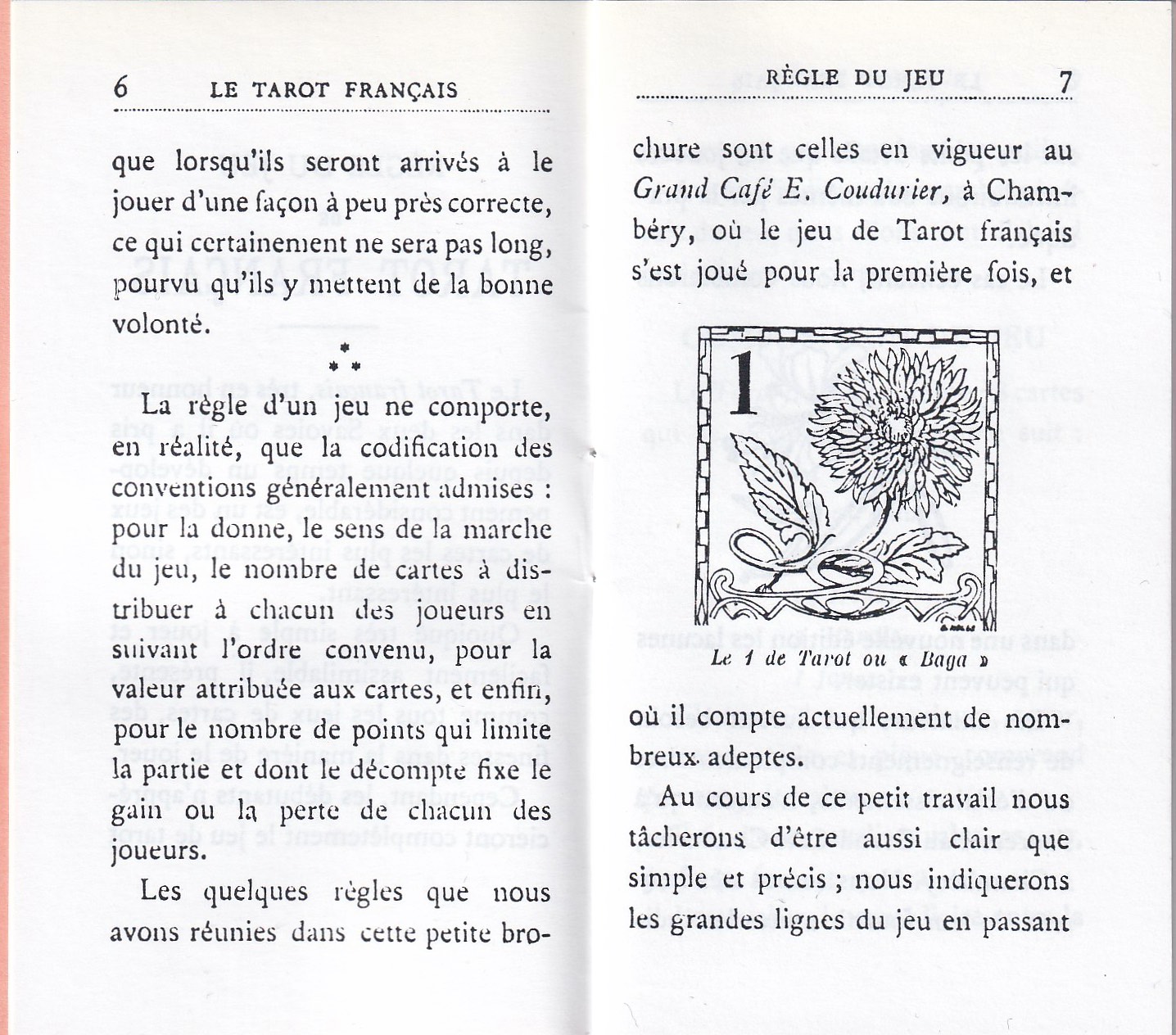
Unfortunately, there has never been a new edition of the rules, the Grand Café no longer seems to exist and the tarot players of Chambéry in the 21st century probably play modern French Tarot. We can therefore no longer be completely certain what payment rules were used, and 21st century players will have to agree on whatever method seem right to them.
The unusual suit card ranking in this game in which the Ace ranks immediately below the Jack in all four suits is also found in the version of Tarot formerly played in Nice and other French games such as Impériale and Ecarté. In contrast to the Nice game and many other Tarot traditions. Note, however, that the cards of the Chambéry Tarot have the same ranking in all suits and are not ranked in reverse order in the red suits.

Botanical Notes
The flowers on the Tarot are stylized and therefore cannot always be identified precisely. The current state of knowledge is as follows:

1 Dandelion (Taraxacum officinale)
2 Pink Flax (Linum pubescens)
3 Poppy (Papaver rhoeas)

4 Cape Aster (Othonna crassifolia)
5 Coral Lily (Lilium tenuifolium)
6 Summer Pheasant’s Eye (Adonis aestivalis)

7 Marigold (Calendula officinalis)
8 Lily of the Valley (Convallaria majalis)
9 Wallflower (Erysimum cheiri)

10 Corncockle (Agrostema githago)
11 Petunia (Petunia hybrida)
12 Avens (Geum coccineum)

13 Early Dog-Violet (Viola reichenbachiana)
14 Chrysanthemum (Chrisanthemum grandifolium)
15 Water Forget-me-Not (Myosotis palustris)

16 Anemone (Anemone coronaria)
17 Lance-Leaved Lily (Lilium lancifolium)
18 Leopard Lily (Lilium pardalinum)

19 Geranium (Pelargonium hortorum)
20 Cape Jewels (Nemesia strumosa)
21 Opium Poppy (Papaver somniferum)
The trumps are fully portrayed in the World Web Playing Card Museum [WWPCM02108].
Foldable Rulesheet
Here is a link to Ulf Martin's German language PDF rulesheet, A4 with 2x5 pages on each side, so that it can be folded to fit into a pack of cards.